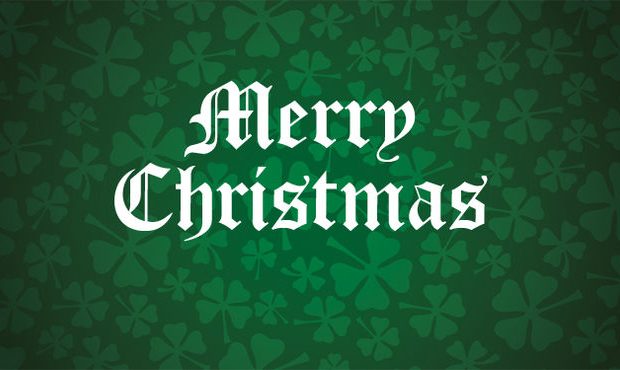Ireland is a land rich in folklore and mythical adventure. Fairies, giants, leprechauns and heroes, alive in the imagination, sprinkle all things Irish with a wee bit a magic. And so, it is at Christmas time as well.
This primarily religious festival, held over 12 days, begins Christmas Eve and ends January 6 with Epiphany, or as it is sometimes called ‘Little Christmas’.
Preparations, however, begin long before December 24, with the traditional ‘whitewashing of the house’. This ancient custom of scrubbing and polishing the home from top to bottom, and whitewashing every structure on the property including the barn and outhouses, is done in late October in a symbolic preparation for the coming of the Saviour. It also serves to make way for the happy reunions, musical celebrations and family festivities and partying that lasts nearly two weeks.
Decorations, including a Christmas tree, are traditionally put on display December 8, in conjunction with the Feast of Immaculate Conception, and taken down on January 6. It is considered bad luck to take them down beforehand.
The popular North American tradition of placing a wreath on the front door can be traced back to Irish settlers and the placement of a ring of holly on doors in Ireland. Holly with its glossy green leaves and festive red berries grows wild in southern Ireland and provides an inexpensive way to decorate homes. The Celtics believed holly represented life and rebirth. One charming story suggests that holly is put out in a kind gesture to tiny fairies that might use it as a hiding place and come out of the cold.
Christmas is also a time to decorate the graves of loved ones with a wreath made of holly and ivy.
Mistletoe was once believed to have healing powers so great that its presence would encourage a brief truce among enemies. This belief led to the custom of kissing under the mistletoe.
A distinctive feature of Irish Catholic decorations is the candle, placed in the front window and lit Christmas Eve. The candle serves as a symbol of welcome to Mary and Joseph who sought shelter in vain.
In the past, during penal times in Ireland, the candle served as a sign of welcome to priests looking for shelter and protection, and indicated that it was safe to say Mass in the home.
The ceremony of lighting the candle is also a ritual, where prayers are said for the departed.
The privilege of striking the match is often given to a daughter named Mary or, in another tradition, lit by the youngest member of the family and snuffed out only by someone named Mary.
Story continues in the December 19, 2012 issue of The Valley Gazette.
